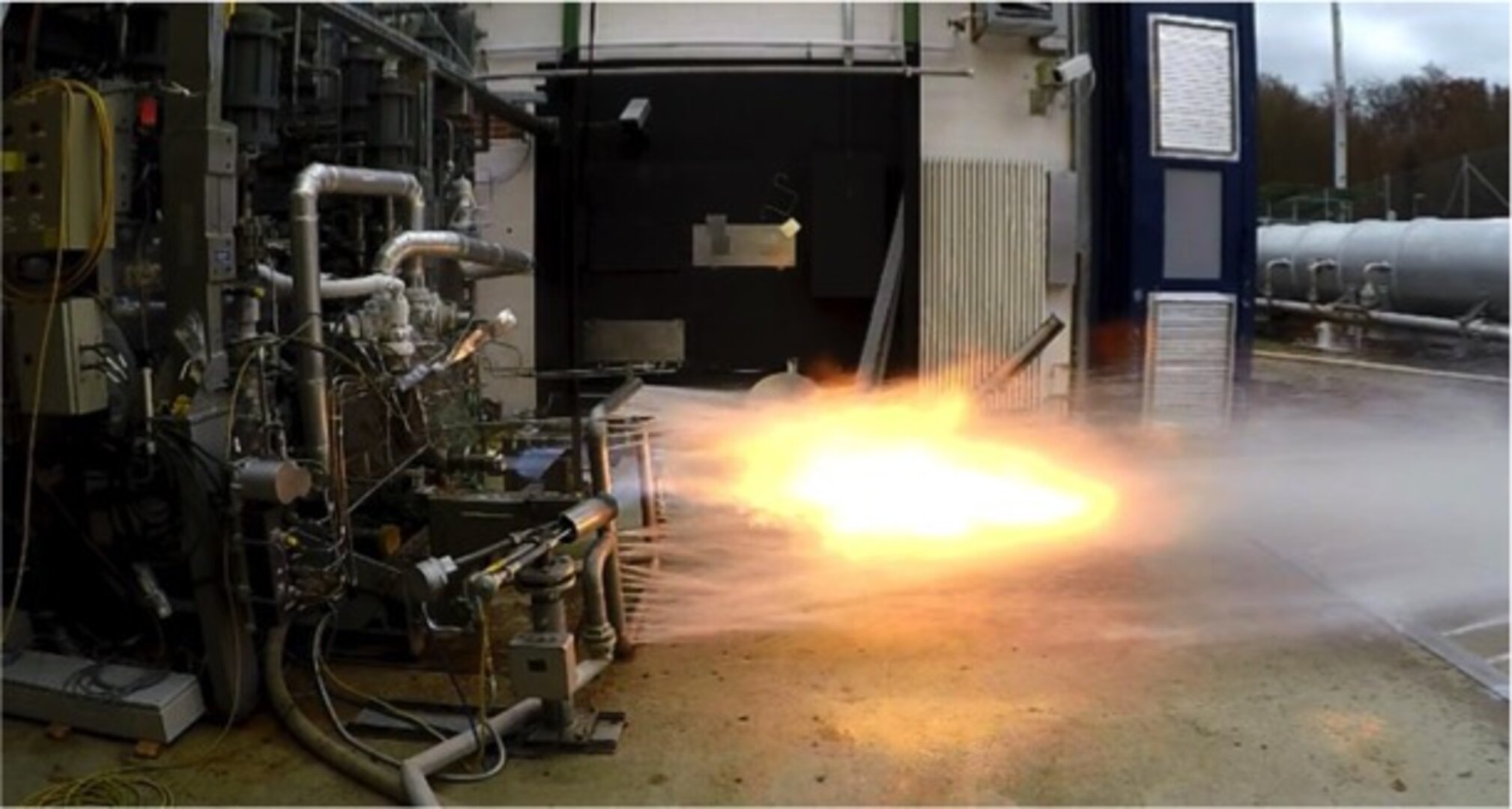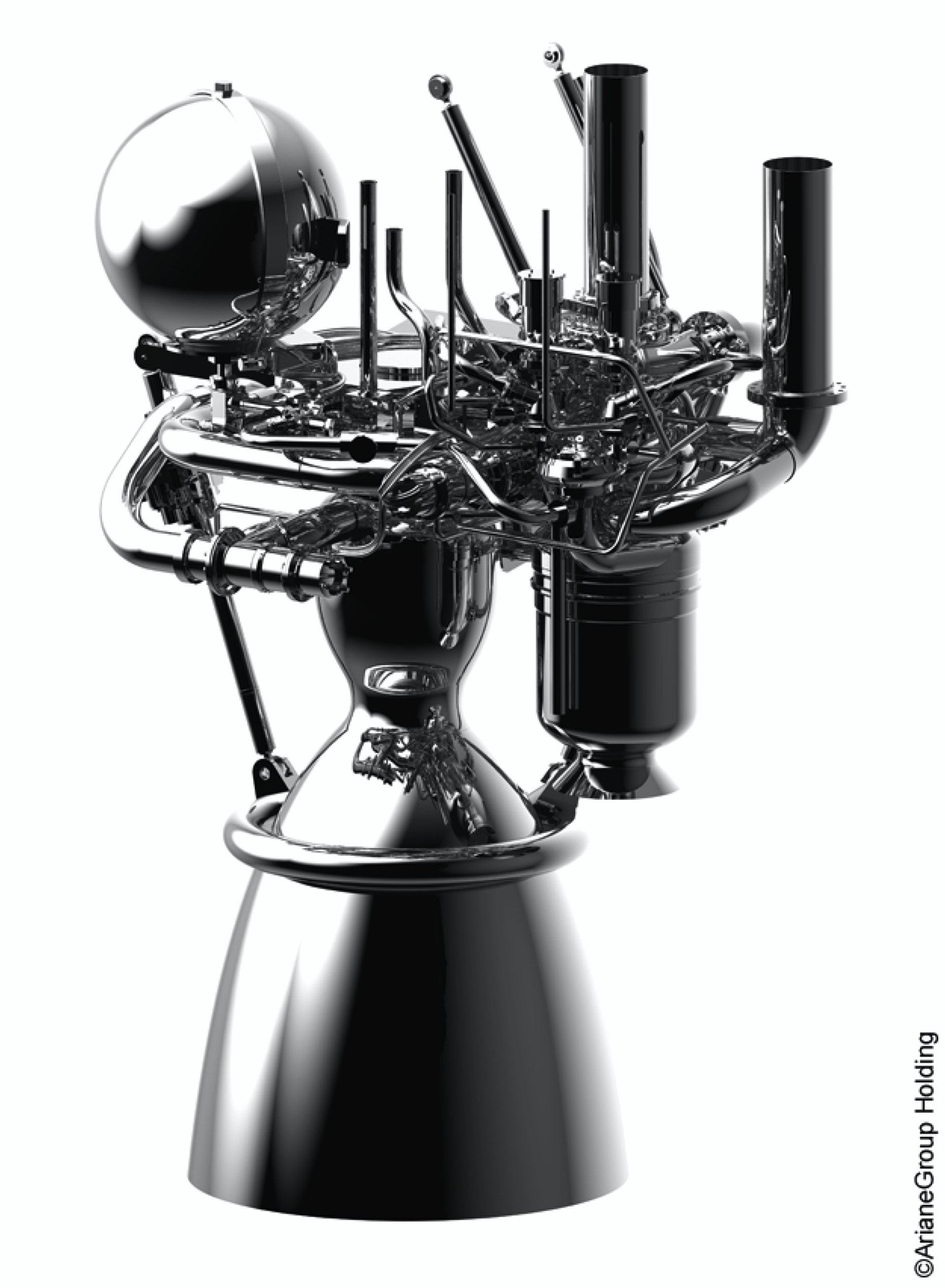Aerospace firm ArianeGroup, a joint venture between Airbus and Safran, has announced that it has successfully tested its first combustion chamber produced entirely by 3D printing.
The 3D printed combustion chamber, designed by the firm in Germany, was successfully fire tested 14 times between 26 May and 2 June 2020 on the P8 test bench of the DLR German Aerospace Center’s Lampoldshausen testing facility.
Manufacturing of the combustion chamber, as well as the testing, was conducted by ArianeGroup and DLR, under European Space Agency (ESA)’s Expander-Cycle Technology Integrated Demonstrator (ETID) project, part of ESA’s Future Launchers Preparatory Programme (FLPP). The tests validate the use of 3D printed hardware components for ESA’s Prometheus engine test model (M1). ArianeGroup believes the success of the tests paves the way for rocket engines made entirely by additive manufacturing.

3D printed combustion chamber demonstrator
ArianeGroup, formed by multinational aerospace corporations Airbus and Safran, was created with the objective of facilitating the development and subsequent production of the Ariane 6 launch vehicle for the ESA.
3D printing has played a key role in the development of the Ariane 6 engines, having been used to manufacture a number of components. Last year, the ESA completed the first hot fire testing of ArienGroup’s full scale, 3D printed rocket engine demonstrator named BERTA (Biergoler Raumttransportaengine/Biergoler space transport drive), as part of the development pipeline of the Ariane 6, a project valued at €3.6 billion ($4 billion USD) at the time.
Other than reducing costs and shortening production cycles, the use of 3D printing has made it possible for ArianeGroup to integrate the Auxiliary Power Unit (APU) into Ariane 6, ultimately increasing the launcher’s unrivalled ability to adapt to the needs of different missions.
Its recent fire testing of the fully 3D printed combustion chamber follows on from the hot fire test campaign carried out by the firm last year, which validated 14 technological building blocks for future liquid propellant rocket engines. The company explains that the results obtained represent a key step in the preparations for the future development of low-cost rocket engines.
ArianeGroup and ESA are not alone in recognizing the benefits of 3D printing in manufacturing combustion chambers and rocket engines. Launcher, a private aerospace company, used 3D printing to manufacture the combustion chamber for its E-2 rocket engine. California-based aerospace company Rocket Lab’s Electron Rocket, which will be used in an upcoming mission with the U.S. Space Force, is also powered by its 3D printed Rutherford engines.

ESA’s Prometheus engine
ArianeGroup’s 3D printed combustion chamber is a full-scale demonstrator for a launcher upper stage engine. It incorporates propulsion technologies and is designed to validate innovative manufacturing technologies, materials and processes like 3D printing, laser ignition, and the use of low-cost materials.
It features a number of innovations, including low-cost copper alloy cooling channels and an outer jacket made through cold spray additive manufacturing. The combustion chamber also incorporates a single-piece injection head produced by a laser fusion 3D printing process. ArianeGroup explains that this is an ideal solution for significantly reducing the construction times and production costs of engines in the future.
Moving forward, the successful validation means 3D printing will be adopted by ArianeGroup for all its liquid-propellant engines, including upper stage engines like the ETID, and its high-thrust maine stage engineers, such as the Prometheus. The company signed a contract with the ESA to manufacture the Prometheus in 2017. ESA’s Prometheus is the precursor of ultra-low-cost rocket propulsion intended to be flexible enough to fit a fleet of new launch vehicles for any mission, with potential reusability.
Work on ETID and Prometheus is being carried out under ESA’s FLPP initiative. This program aims to enhance the competitiveness of future European launchers by producing mature technical solutions that are ready for rapid deployment, developing products with lower cost, effort, and risk.
The nominations for the 2020 3D Printing Industry Awards are now open. Who do you think should make the shortlists for this year’s show? Have your say now.
Subscribe to the 3D Printing Industry newsletter for the latest news in additive manufacturing. You can also stay connected by following us on Twitter and liking us on Facebook.
Looking for a career in additive manufacturing? Visit 3D Printing Jobs for a selection of roles in the industry.
Featured image shows the Prometheus gas generator undergoing testing. Photo via ArianeGroup.

